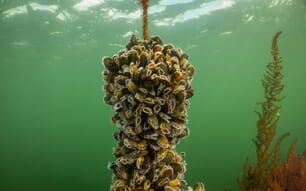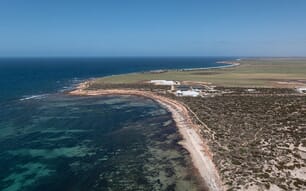The overview covers 28 fisheries around the Atlantic Ocean and South America rated according to the sustainability assessment presented on www.fishsource.com.
The report 'Small Pelagics: SFP Fisheries Sustainability Overview 2014' shows that about two thirds of fish from the Atlantic and South American stocks of small pelagic species come from relatively well managed fisheries. A slightly smaller proportion – 55 per cent - would meet the current feed requirements of the leading aquaculture certifications. The other 33 per cent of fish originate from stocks that are not well managed, although only 17.8 per cent of fish come from fisheries that are actually depleted.
The main conclusions of the report include:
- Just 8 per cent of the total catch comes from stocks in very good condition. This corresponds to two herring stocks and one blue whiting stock from the Northeast Atlantic.
- Cumulatively, 66.5 per cent of the catch supply comes from stocks that are reasonably well managed (or better).
- More than half (55.3 per cent ) of the catch comes from stocks that are in line with the current Aquaculture Stewardship Council requirements for fisheries providing fishmeal and fish oil for feed to certified farms.
- 33.5 per cent of the catch comes from stocks that are not effectively managed. These stocks have not been effectively managed or are currently in poor condition and significant improvements are required.
- In terms of MSC certification, four of the stocks contain fisheries that are certified according to the Marine Stewardship Council or in full assessment. Twelve of the stocks are used as sources of fishmeal that are certified for use under the International Fishmeal and Fish Oil Organisation Responsible Supply (IFFO RS) program. Only three per cent of the total volume of fish from the 28 stocks is MSC certified.
The report also highlights an emerging scientific consensus that certain small pelagic stocks can be considered “key” to ecosystems because of their role in energy flows from primary producers to higher trophic levels. Stocks that are identified as key in the future will need to be managed with greater precaution than under current regimes in order to ensure responsible stewardship of this resource.
Commenting on the results, Jim Cannon, CEO of Sustainable Fisheries Partnership, said:
“This report brings both good news for the fishmeal and oil industry and a strong note of caution about the future. Many of these fisheries are well managed and it’s a credit to the industry that more than half the fish can meet the current feed requirements of the Aquaculture Stewardship Council. However, there is an increasing body of scientific knowledge that suggests we need to adopt a more precautionary approach when managing some stocks of small pelagic fish and this may well have implications for the fishmeal and oil industry in the future.”


